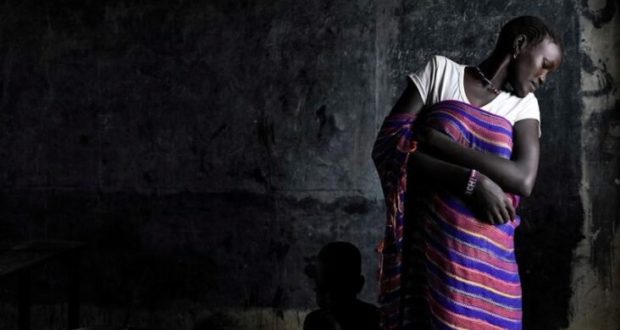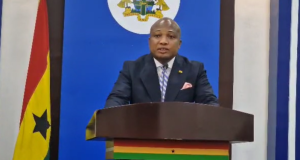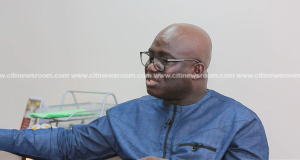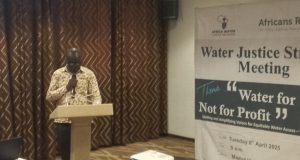From Morocco to Spain, from Libya to Italy, Africans are moving outside their continent, seeking new lives beyond its shores, and too often perishing in the process.
From Somalia to Kenya, from South Sudan to Uganda, millions are also moving within their continent, fleeing conflict or disaster, and seeking refuge in neighbouring countries.
But most families and communities on the move in Africa are in fact seeking safety closer to home: from Bama to Maiduguri in Nigeria, and from Mwenga to Uvira in the DRC, millions are leaving their homes but never crossing a border.
These are the stories that rarely make the headlines. The internally displaced are too often internally – as well as internationally – disregarded.
No denying the data, or the reality
Internal displacement in Africa has reached unprecedented levels. Research published in December 2019 by the Internal Displacement Monitoring Centre shows that in 2018, Africa accounted for nearly 70% of all new internal displacement caused by conflict and violence in the world, and for 15% of internal displacement caused by disasters like floods, droughts and storms.
The continent saw 7.5 million new violence-related displacements in 2018 – driven by an escalation of violence in West Africa (Nigeria, Cameroon, Mali) and persistent conflict across East and Central Africa (Ethiopia and Somalia, and DRC, CAR and South Sudan).
Likewise, there were 2.6 million new disaster-related displacements in 2018. In Nigeria, for example, 80% of the population were affected when the Niger and Benue rivers burst their banks. In Somalia, Kenya and Ethiopia, hundreds of thousands continued to lose their homes and livelihoods to droughts and floods.
In the first half of this year already, violence has uprooted another 2.1 million and disaster 2.3 million. In April, Cyclone Idai alone forced over 600,000 people from their homes, and at least 80,000 of them are still displaced in Mozambique today.
Last month, I travelled to Maiduguri and north-east Nigeria, and saw for myself how this combustible cocktail of conflict and disaster is driving these numbers up – with over 2 million people now displaced across the country’s north-east, north-west, and Middle Belt.
Conflict and disaster displacement – both fuelled by and accelerating urbanisation, environmental degradation, and a host of other development challenges – places Africa at the centre of this global challenge.
The answer lies in good policy …
Africa can be a beacon to the world in its response to this challenge.
Its solutions are framed by the Kampala Convention – ten years old in December 2019 – the world’s only legally binding regional instrument and framework to protect and assist the displaced.
The African Union has declared this anniversary year 2019 as its Year of Refugees, Returnees and IDPs. 30 of the continent’s 55 countries have ratified the Convention – Somalia did so last week – and one, Niger, has just adopted a national law on internal displacement.
In the last two years alone, Burundi, the DRC, Ethiopia, Niger, Mali, Somalia, South Sudan, Sudan and Zambia have all developed related laws or policies.
While Niger’s law supports both prevention and longer-term responses, with budgets to match, Somalia has pioneered innovative approaches to improve IDPs’ access to land and tenure security, and Ethiopia has just launched a Durable Solutions Initiative. Last year it saw 2.9 million conflict displacements and nearly 300,000 disaster displacements.
In Nigeria, a new Government Ministry has been established to coordinate all efforts in dealing with the problem. Its approach has to be comprehensive, spanning integrated policy, solid data, peace and security, humanitarian aid and long-term development.
….. and good data
Underpinning good policy is of course good data.
Good data on internal displacement in Africa has never been easy to come by. Data collection is often complicated by inaccessibility on the ground, gaps in resources and technical capacity, coordination challenges, and the lack of common standards and definitions.
With internal displacement increasing in scale and complexity, the data gaps are also multiplying.
While the full scale of displacement linked to slow-onset disasters like drought, coastal erosion or desertification remains unknown, there is also still limited understanding of what pushes IDPs to sometimes become refugees, and what challenges they may face if and when they decide to return.
One of the priorities is knowing the exact conditions under which these returns are taking place, and the prospects for resuming a normal life. We have data on a range of partial and unverified returns in 11 countries in Africa in 2018, ranging from 1.5 million in the DRC to 12,000 in South Sudan. But in many cases, people returned to ongoing insecurity, damaged or destroyed houses, absent infrastructure and services.
If we don’t invest in monitoring their situation over time, the risk of witnessing new cycles of instability and displacement in the future will be high.
Again, Africa holds some of the answers. For instance, in the use of risk modeling and early-warning systems. But above all in making internal displacement data more comprehensive, and above all actionable.
Most heartening of all is the way that governments are increasingly recognising the urgency of the issue and partnering with international organisations to combine local knowledge, manpower, access, and technical expertise.
Inaction is not an option. It locks the most vulnerable IDPs into the risk of repeated, cyclical and protracted displacement.
What I saw in Nigeria – and what we read now in the body of data and analysis collected in the African Report on Internal Displacement – embodies both the scale of the challenge, and many of the best examples of the response.
Africa’s millions of internally displaced people can happily stay out of the news for ever if its governments go fast and go deep in restoring homes, and hopes.
 Public Agenda NewsPaper Ghana's only Advocacy & Development Newspaper
Public Agenda NewsPaper Ghana's only Advocacy & Development Newspaper






